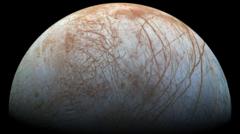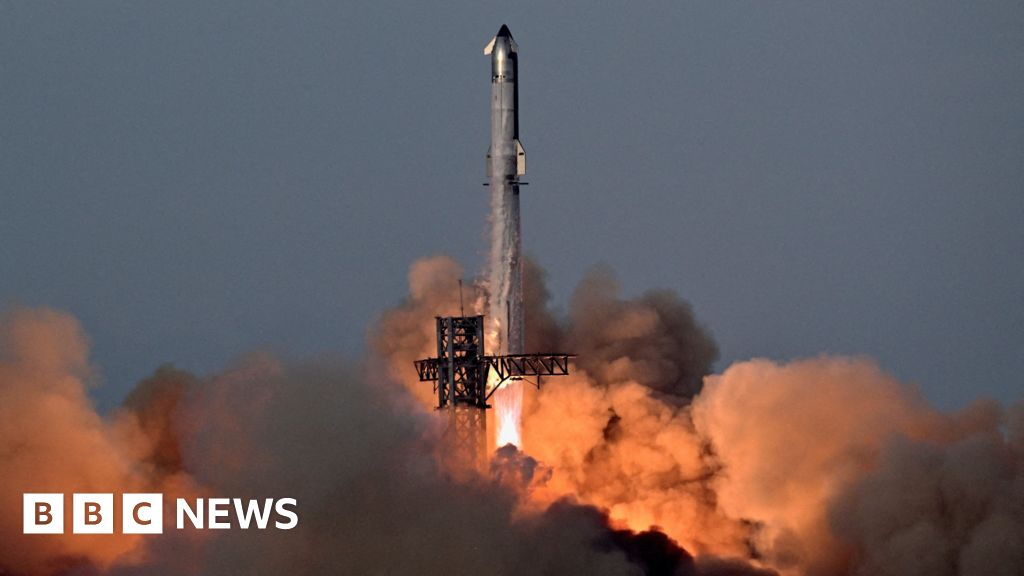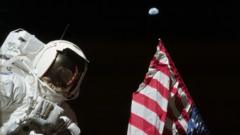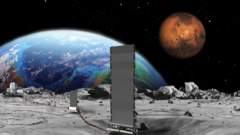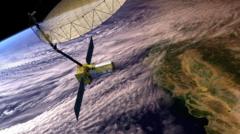In just a few hours, a significant mission of exploration is set to commence from Cape Canaveral, Florida, as NASA's Europa Clipper spacecraft launches towards Jupiter's enigmatic moon, Europa. This mission, conceived at NASA's Jet Propulsion Laboratory in California, holds the promise of uncovering signs of life far across the solar system. The spacecraft's journey involves a cosmic leapfrogging maneuver, intended to outpace a European mission and reach Europa by 2030. The moon is theorized to house an immense saltwater ocean, potentially home to the conditions necessary for life.
Europa, located a staggering 628 million kilometers from Earth, is slightly larger than Earth's moon and reflects light much more intensely owing to its icy surface. Speculations about life-supporting conditions on Europa first surfaced in the 1970s, fueled by observations of water ice. This concept gained traction with data from the Voyager missions and NASA’s Galileo probe, which revealed Europa's peculiar landscape, scarred by dark, spectral fractures.
The upcoming mission will utilize state-of-the-art instruments aboard the Clipper to map Europa's surface, collect dust particles, and potentially pass through plumes of water venting from its icy shell. A particularly promising tool, a laser-carrying instrument known as Reason, built with insights from earthbound testing in Antarctica, is designed to penetrate the icy crust.
Despite the exhilaration surrounding this mission, Prof. Britney Schmidt and other scientists express caution regarding the significant radiation hazard present in Europa's environment. Consequently, Clipper's electronics are encased within a heavily shielded vault to endure radiation exposure equivalent to a million X-rays across its flybys.
The spacecraft will undertake a 1.8 billion-mile voyage using gravity assists from Earth and Mars to propel itself towards Europa, eventually bypassing the European Space Agency's JUICE mission. Once at Europa, the Clipper will navigate a tailored orbit to optimize its study of the moon.
The ultimate goal isn't to discover fully-fledged life but to assess habitability potential—seeking the essential conditions of liquid water, a heat source, and organic material stability. As astrobiologist Mark Fox-Powell notes, this mission represents a fundamental pursuit of understanding, not profit, highlighting humanity's intrinsic desire to explore and redefine our role in the universe. The collaborative effort of NASA, Jet Propulsion Lab, and Johns Hopkins Applied Physics Lab scientists symbolizes an era of curiosity-driven space exploration amidst a rapidly evolving cosmic landscape.
Europa, located a staggering 628 million kilometers from Earth, is slightly larger than Earth's moon and reflects light much more intensely owing to its icy surface. Speculations about life-supporting conditions on Europa first surfaced in the 1970s, fueled by observations of water ice. This concept gained traction with data from the Voyager missions and NASA’s Galileo probe, which revealed Europa's peculiar landscape, scarred by dark, spectral fractures.
The upcoming mission will utilize state-of-the-art instruments aboard the Clipper to map Europa's surface, collect dust particles, and potentially pass through plumes of water venting from its icy shell. A particularly promising tool, a laser-carrying instrument known as Reason, built with insights from earthbound testing in Antarctica, is designed to penetrate the icy crust.
Despite the exhilaration surrounding this mission, Prof. Britney Schmidt and other scientists express caution regarding the significant radiation hazard present in Europa's environment. Consequently, Clipper's electronics are encased within a heavily shielded vault to endure radiation exposure equivalent to a million X-rays across its flybys.
The spacecraft will undertake a 1.8 billion-mile voyage using gravity assists from Earth and Mars to propel itself towards Europa, eventually bypassing the European Space Agency's JUICE mission. Once at Europa, the Clipper will navigate a tailored orbit to optimize its study of the moon.
The ultimate goal isn't to discover fully-fledged life but to assess habitability potential—seeking the essential conditions of liquid water, a heat source, and organic material stability. As astrobiologist Mark Fox-Powell notes, this mission represents a fundamental pursuit of understanding, not profit, highlighting humanity's intrinsic desire to explore and redefine our role in the universe. The collaborative effort of NASA, Jet Propulsion Lab, and Johns Hopkins Applied Physics Lab scientists symbolizes an era of curiosity-driven space exploration amidst a rapidly evolving cosmic landscape.

